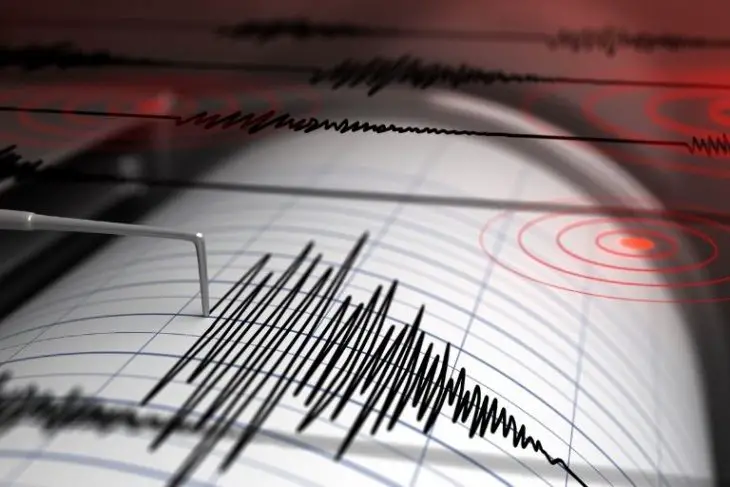Whether you’re starting out on a soundproofing venture or learning to edit and mix your own audio, it’s important to have a basic understanding of different frequencies. Even if you don’t know how to describe the difference between high-frequency sounds and low-frequency sounds, human hearing can detect the differences between the two — we perceive differences in frequencies as differences in pitch.
Table of Contents
- What Does “Frequency” Mean?
- What Is a High-Frequency Sound?
- What Is a Low-Frequency Sound?
- What About Midrange Frequencies?
- Can We Hear Sound Waves of All Frequencies?
- Why Should You Know the Difference Between Frequencies?
What Does “Frequency” Mean?
The “frequency” of a sound refers to the pitch, but the term “frequency” refers to how frequent the vibrations that produce a given sound.

If you were to look at a map of the sound waves producing a high-frequency noise, those waves would be very close to one another in what looks like a sine wave that has been pushed together from both sides.
By contrast, a map of low-frequency noise will look more like a gently rolling sine wave, while a map of midrange frequencies will fall somewhere in the middle.
It’s important to understand that a picture of sound wave frequency is different from a picture of amplitude. Most DAWs (digital audio workstations) will default to showing the amplitude of each track, and this picture can look a little like a map of the frequency of sound waves.
The frequency of any given sound is measured in hertz. Hertz (Hz) is the unit of measurement for frequency, and a single unit equals one cycle per second. High-frequency sound waves cycle more rapidly, as a higher measurement in hertz equals a higher-pitched sound. Low-frequency sound waves cycle fewer times per second, and low-frequency sounds have lower measurements in hertz.
What Is a High-Frequency Sound?
As we explained above, high-frequency waves sound higher pitched to those with healthy hearing. Generally speaking, high-frequency waves range between 2,000 and 20,000 hertz. Most people can’t hear sound with a frequency higher than 20,000 hertz (also written as 20 kHz).
In general, healthy young adults can hear sounds at higher frequencies than older people, as most of us experience some degree of hearing loss as we age.

High-Frequency Sounds in Daily Life
Most of us hear frequencies in the high range constantly throughout the day. The sound of most birds chirping is an example of a high-frequency sound.
Other higher-frequency sounds include sibilance (the hissing sound you sometimes hear when someone pronounces a word including the letter “s”), whistles, and the clash of cymbals. Microphone feedback is an example of a high-frequency sound that is especially harsh and unpleasant.
High-Frequency Sounds in Music
Identifying higher frequencies in music is fairly straightforward — if an instrument makes what is perceived as a higher pitch, it produces a higher-frequency sound. Violins, piccolos, triangles, and cymbals are some common high-frequency instruments.
What High Frequencies Cause Problems?
As you may have gathered already, the higher the frequency, the higher the likelihood of it making a mix sound harsh. But this is a difficult line to tread while mixing. Frequencies between 2000 and 5000 Hz can add some real sparkle to a mix, but they should be used in moderation. Over-emphasizing them can make an entire mix sound overly harsh and unbalanced, which is something you of course want to avoid.
What Is a Low-Frequency Sound?
Low-frequency sounds are typically perceived as being deep or rumbling, and most of them fall within the range of 500 Hz and lower. (For most people, the lowest sound they can hear is around 20 Hz, although they may be able feel even lower frequencies).
Low-Frequency Sounds in Daily Life
In many cases, you can feel very low-frequency sounds as well as hear them. For example, if a large diesel truck rolls by, you can probably feel a rumble in your chest. Earthquakes also can produce very low-frequency sounds.

Low-Frequency Sounds in Music
Even if you aren’t a musician, you probably can identify a few different instruments that produce low-frequency sound. The upright bass and the electric bass guitar are two common examples, and the tuba is a popular low-frequency brass instrument.
You may have found that some types of music tend to have bass that sounds incredibly low. Often, that’s because experienced sound engineers can use certain EQ tricks to make low frequencies sound even lower than they actually are.
What Low Frequencies Cause Problems?
If you’re mixing an audio project, be sure to handle your bass frequencies carefully. There are a couple of areas where low-frequency noise can cause issues. One is in the area of very, very low frequencies — like 50 Hz or below.
Especially in house or club music, it can be tempting to try to include some of the lowest frequencies possible. But a lower frequency like this one can actually cause the quality of a song to suffer, as most speakers can’t accurately produce it.
The lower midrange is another frequency range that can cause issues. These frequencies usually range from 200 to 500 Hz. Some filtering is usually necessary in this range, as low-mid frequencies have a tendency to make a mix sound “muddy.”
Plenty of people newer to mixing tend to run into trouble with mixes that sound too indistinct, and making sure these frequencies don’t take up too much space is a good place to start when fixing these issues.
What About Midrange Frequencies?
Though human ears can discern a wide variety of frequencies, our ears have the easiest time hearing frequencies in the midrange. Midrange frequencies fall between 500 Hz and 2000 Hz.
Midrange Frequencies in Daily Life
Part of the reason humans have the ability to easily hear midrange frequencies is the fact that most human speech falls right in this range. Most of the sounds in movies and TV shows — whether ambient sound, speech, or music — falls into this range.
Midrange Frequencies in Music
Many musical instruments used in popular music tend to produce sounds that live comfortably in the land of midrange frequencies. Most guitars, pianos, and keyboards primarily produce these sound frequencies.
It’s important to note here that many headphones designed for regular consumer use have scooped mids — that means that they emphasize bass and treble frequencies. A pair of headphones designed for audio mixing will help you more accurately hear the full spectrum of different sounds in a mix.
What Midrange Frequencies Cause Problems?
Though some human voices may sound high-pitched, the voice usually falls in the range of mid-frequency sound. The exact frequencies that cause issues will vary depending on your recording setup and the exact vocalist you’re working with.
However, the range between 400 to 1100 Hz can often present an issue — it’s these frequencies that cause vocals to sound overly nasal. By notch filtering these frequencies out or boosting the surrounding frequencies, you can usually dramatically improve your mix.
Can We Hear Sound Waves of All Frequencies?
Applications like soundproofing and audio mixing obviously deal with the sound waves that we can hear. But does normal hearing let us hear sounds of all frequencies?
The short answer here is no. The human ear usually can’t detect sounds with a lower pitch than 20 Hz.
So why should you know a little about frequencies that you can’t even hear? Sometimes, unhearable frequencies can even damage your hearing. Some research has found that being exposed to bass sounds below 20 Hz can predispose your ears to damage and hearing loss over time.
Why Should You Know the Difference Between Frequencies?
Even if you don’t have aspirations to be an audio engineer or mix your own music, having some knowledge of different frequencies can be helpful. If you’re investing in soundproofing your car, for instance, it’s helpful to understand which frequencies an acoustic windshield or other pieces of equipment will block.
Knowing more about frequencies can help you understand why most sirens fall between 1,000 and 3,000 hertz — human hearing is especially sensitive in this range, and people also start to lose the ability to localize sound in this range. Essentially, understanding the frequencies of different sounds will help you better understand your world.
Recommended Reading
Why Is There White Noise in My Recording?
Recording your tracks in a home studio has plenty of advantages -- you save money, you don't have to haul your gear everywhere, and you don't have to worry...
How to fix high pitch noise from the microphone
Maybe it's happened to you before -- you're on stage and ready to perform, but you hear a sudden, high-pitched sound. But then it gets louder. And louder...
Why are my speakers making a static noise?
Static sound and crackling sound can be generally referred to as distortion. Distortion can be caused by several different factors.